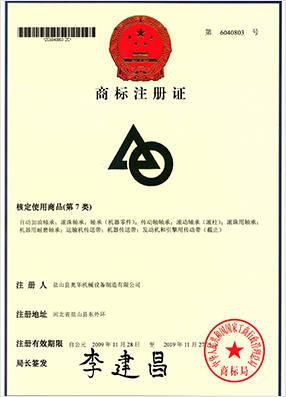 Afrikaans
Afrikaans  Albanian
Albanian  Amharic
Amharic  Arabic
Arabic  Armenian
Armenian  Azerbaijani
Azerbaijani  Basque
Basque  Belarusian
Belarusian  Bengali
Bengali  Bosnian
Bosnian  Bulgarian
Bulgarian  Catalan
Catalan  Cebuano
Cebuano  Corsican
Corsican  Croatian
Croatian  Czech
Czech  Danish
Danish  Dutch
Dutch  English
English  Esperanto
Esperanto  Estonian
Estonian  Finnish
Finnish  French
French  Frisian
Frisian  Galician
Galician  Georgian
Georgian  German
German  Greek
Greek  Gujarati
Gujarati  Haitian Creole
Haitian Creole  hausa
hausa  hawaiian
hawaiian  Hebrew
Hebrew  Hindi
Hindi  Miao
Miao  Hungarian
Hungarian  Icelandic
Icelandic  igbo
igbo  Indonesian
Indonesian  irish
irish  Italian
Italian  Japanese
Japanese  Javanese
Javanese  Kannada
Kannada  kazakh
kazakh  Khmer
Khmer  Rwandese
Rwandese  Korean
Korean  Kurdish
Kurdish  Kyrgyz
Kyrgyz  Lao
Lao  Latin
Latin  Latvian
Latvian  Lithuanian
Lithuanian  Luxembourgish
Luxembourgish  Macedonian
Macedonian  Malgashi
Malgashi  Malay
Malay  Malayalam
Malayalam  Maltese
Maltese  Maori
Maori  Marathi
Marathi  Mongolian
Mongolian  Myanmar
Myanmar  Nepali
Nepali  Norwegian
Norwegian  Norwegian
Norwegian  Occitan
Occitan  Pashto
Pashto  Persian
Persian  Polish
Polish  Portuguese
Portuguese  Punjabi
Punjabi  Romanian
Romanian  Russian
Russian  Samoan
Samoan  Scottish Gaelic
Scottish Gaelic  Serbian
Serbian  Sesotho
Sesotho  Shona
Shona  Sindhi
Sindhi  Sinhala
Sinhala  Slovak
Slovak  Slovenian
Slovenian  Somali
Somali  Spanish
Spanish  Sundanese
Sundanese  Swahili
Swahili  Swedish
Swedish  Tagalog
Tagalog  Tajik
Tajik  Tamil
Tamil  Tatar
Tatar  Telugu
Telugu  Thai
Thai  Turkish
Turkish  Turkmen
Turkmen  Ukrainian
Ukrainian  Urdu
Urdu  Uighur
Uighur  Uzbek
Uzbek  Vietnamese
Vietnamese  Welsh
Welsh  Bantu
Bantu  Yiddish
Yiddish  Yoruba
Yoruba  Zulu
Zulu conveyor drum pulley
Understanding Conveyor Drum Pulleys Function and Importance
In the realm of material handling, the conveyor system is a crucial component in various industries, from manufacturing and mining to packaging and logistics. At the heart of these systems is the conveyor drum pulley, a vital element that plays a significant role in the efficiency and effectiveness of operation. Understanding the design, function, and importance of drum pulleys can enhance maintenance strategies and improve overall productivity in conveyor systems.
Structure and Function
A conveyor drum pulley typically consists of a cylindrical body mounted on a shaft. These pulleys are designed to work in tandem with conveyor belts, serving both as a driving mechanism and a supportive structure. The driving drum pulley, often referred to as the head pulley, is responsible for transmitting the drive force from the motor to the belt. Conversely, the tail pulley facilitates belt tension and provides a return path for the material being transported.
The surface of the drum pulley is usually covered with rubber or other materials to enhance grip, thereby preventing slippage of the conveyor belt during operation. The design can vary based on the application, with some pulleys featuring additional elements such as grooves or lagging to improve performance under specific conditions.
Importance in Conveyor Systems
The efficiency of conveyor systems heavily relies on the functionality of drum pulleys. They are integral in maintaining tension in the conveyor belt, which is crucial for the smooth operation of the system. Proper tension ensures that materials are transported effectively without interruption. If the tension is too loose, the belt may slip, leading to potential hazards and inefficiencies.
conveyor drum pulley

Moreover, well-maintained drum pulleys contribute to the longevity of the conveyor system. Regular inspection and maintenance of these components can prevent premature wear and tear, ultimately saving costs associated with repairs and replacements. Additionally, drum pulleys that are not functioning optimally can lead to uneven wear across the conveyor belt, resulting in increased downtime and reduced operational efficiency.
Types of Conveyor Drum Pulleys
There are several types of drum pulleys, each designed to serve specific purposes in varying applications. The most common types include
1. Drive Pulleys These are the pulleys powered by the drive motor, responsible for moving the belt. 2. Tail Pulleys Positioned at the end of the conveyor, they support the belt and return it to the drive pulley. 3. Snub Pulleys These are used to improve belt tension and redirect the belt as needed.
Conclusion
In summary, conveyor drum pulleys are essential components that ensure the smooth and efficient operation of conveyor systems across numerous industries. By understanding their function and maintaining them properly, companies can greatly enhance their productivity and minimize potential disruptions in their material handling processes. As technology evolves, the design and capabilities of drum pulleys will likely continue to improve, further optimizing the performance of conveyor systems globally.
-
Revolutionizing Conveyor Reliability with Advanced Rubber Lagging PulleysNewsJul.22,2025
-
Powering Precision and Durability with Expert Manufacturers of Conveyor ComponentsNewsJul.22,2025
-
Optimizing Conveyor Systems with Advanced Conveyor AccessoriesNewsJul.22,2025
-
Maximize Conveyor Efficiency with Quality Conveyor Idler PulleysNewsJul.22,2025
-
Future-Proof Your Conveyor System with High-Performance Polyurethane RollerNewsJul.22,2025
-
Driving Efficiency Forward with Quality Idlers and RollersNewsJul.22,2025





























